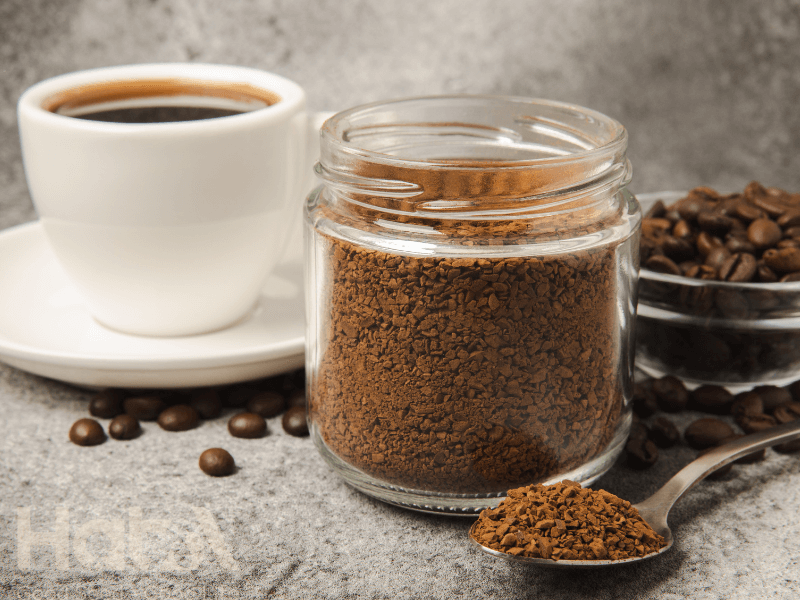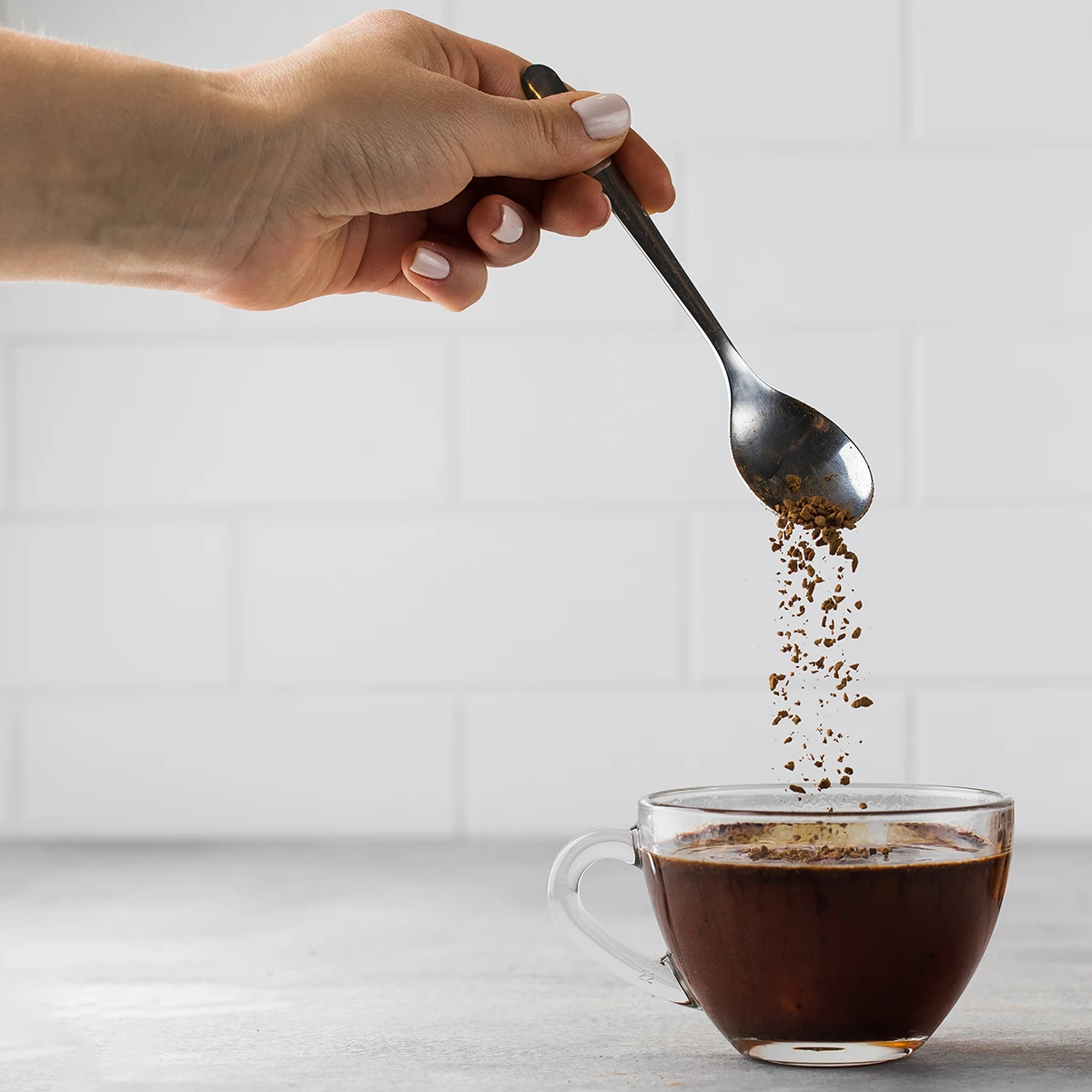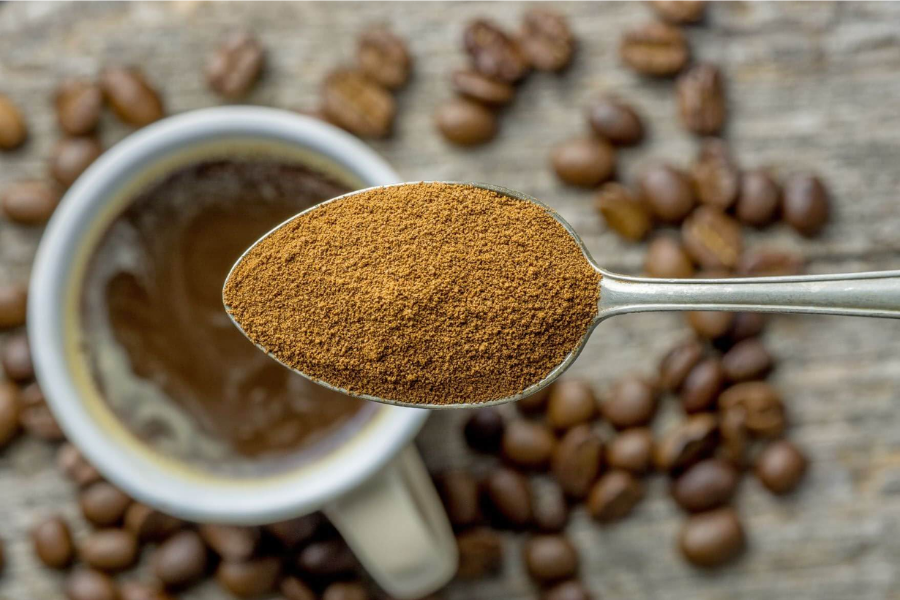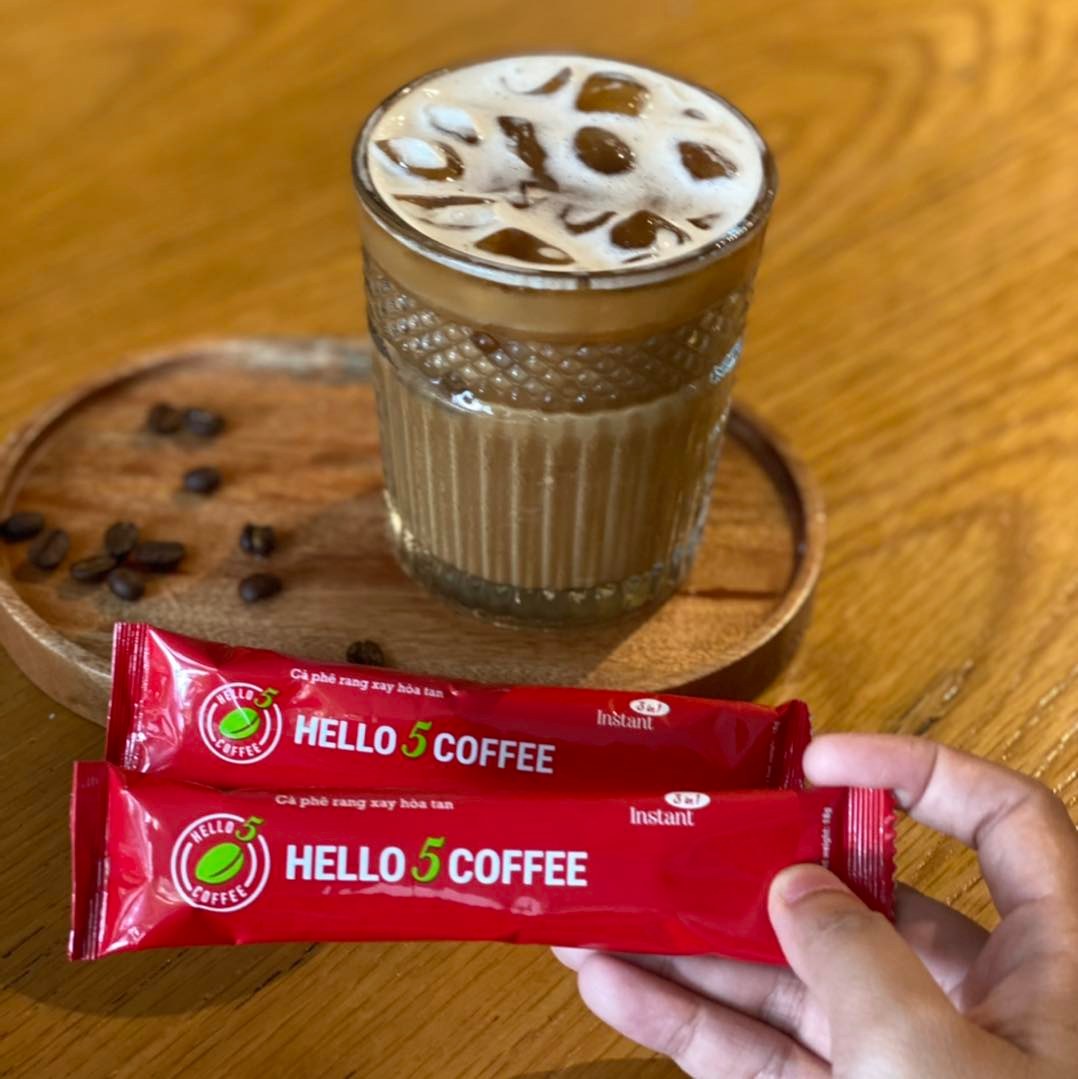Instant coffee has become an essential part of modern life, offering convenience without compromising the coffee experience. This comprehensive guide explores everything about instant coffee, from its meaning and ingredients to how it’s made and why it continues to be a popular choice worldwide.
What Is Instant Coffee? Understanding Instant Coffee Meaning
Instant coffee, also known as soluble coffee or coffee powder, is a beverage derived from brewed coffee that has been processed into a dry, shelf-stable form. The instant coffee meaning encompasses both the product and the convenience it represents—a pre-flavored coffee powder created through roasting, grinding, and dehydration processes that can be prepared instantly by simply adding hot water and stirring.
Unlike traditional coffee that requires brewing equipment, instant coffee dissolves completely in water within seconds. This ready-to-drink coffee can be stored for extended periods and is incredibly easy to use, making it perfect for busy lifestyles, travel, and situations where brewing equipment isn’t available.

The key characteristic that defines instant coffee is its instant preparation method—no filters, no brewing time, no specialized equipment needed. This convenience factor is what makes instant coffee one of the most consumed coffee products globally.
Is Instant Coffee Real Coffee?
A common question many coffee drinkers ask is: is instant coffee real coffee? The answer is absolutely yes. Instant coffee is made from 100% real coffee beans, typically Arabica, Robusta, or a blend of both varieties.
The difference between instant coffee and regular coffee isn’t in the source material but in the processing method. While regular coffee requires you to extract the flavors at home through brewing, instant coffee has already undergone this extraction process in a factory using advanced technology. The brewed coffee is then dehydrated, leaving behind coffee solids that can be reconstituted with water.
Is instant coffee real coffee in terms of nutritional value? Yes. It still contains caffeine (though slightly less than brewed coffee), antioxidants, and beneficial compounds found in regular coffee. A typical cup of instant coffee contains 30-90mg of caffeine compared to 70-140mg in traditionally brewed coffee.
The quality of instant coffee depends largely on the quality of beans used and the production method employed. Premium instant coffee made from high-quality Arabica beans using freeze-drying technology can taste remarkably close to freshly brewed coffee.
Instant Coffee History: From Innovation to Global Phenomenon
The instant coffee history begins in 1901 when Satori Kato, a Japanese-American scientist, invented the first instant coffee process. He introduced his creation at the Pan-American Exposition in Buffalo, New York, marking the birth of instant coffee as we know it today.
However, the first commercially successful instant coffee was Red E Coffee, created in 1909 by George Constant Louis Washington, a Belgian inventor living in America. He founded the G. Washington Coffee Company, and his product became the primary coffee supply for U.S. troops during World War I, establishing instant coffee’s reputation for convenience and portability.
The instant coffee origin story took a major turn in 1938 when Nestlé introduced Nescafé, a significantly improved instant coffee with better flavor retention. This product resulted from seven years of research and development and revolutionized the global coffee market.
After World War II, instant coffee exploded in popularity. Soldiers returning home had grown accustomed to its convenience, and manufacturers continuously improved quality. The 1960s saw the introduction of freeze-dried technology, creating instant coffee that retained much more of fresh coffee’s characteristics.
Today, instant coffee represents approximately 50% of all coffee consumed in some countries, with Asia-Pacific being the largest market. The instant coffee history reflects humanity’s constant pursuit of convenience without sacrificing quality.
Instant Coffee Ingredients: What’s Actually Inside?
Understanding instant coffee ingredients is essential for making informed choices. Pure, unadulterated instant coffee contains only one ingredient: dehydrated coffee extract. This is simply coffee that has been brewed and dried, with all water removed.
However, depending on the product type, you may find additional instant coffee ingredients:
Pure Instant Coffee:
- 100% coffee extract (from Arabica, Robusta, or blended beans)
- Sometimes maltodextrin (added to improve solubility and texture)
- Natural or artificial flavoring (in flavored varieties)
Instant Coffee Mix (3-in-1, 2-in-1): The instant coffee ingredients in these convenience products typically include:
- Instant coffee (20-30%)
- Sugar or sweeteners (30-50%)
- Creamer powder from dairy or plant-based sources (20-40%)
- Stabilizers and emulsifiers
- Flavoring agents
- Anti-caking agents
Always read product labels carefully to understand exactly what instant coffee ingredients you’re consuming, especially if you’re monitoring sugar intake, calories, or have dietary restrictions.

How Is Instant Coffee Made?
Understanding instant coffee how is it made reveals the sophisticated technology behind this everyday product. The process transforms regular coffee beans into soluble powder through several precise steps.
Step 1: Roasting and Grinding
Coffee beans are roasted at specific temperatures and durations to develop optimal flavor profiles. The roast level varies depending on the desired final product—from light to dark roast instant coffee. After roasting, beans are ground coarser than regular coffee grounds to optimize the extraction process.
Step 2: Extraction
This is where the magic happens in how instant coffee is made. Ground coffee is placed in massive extraction towers where hot water under high pressure (up to 15 bars) circulates through the grounds for several hours. This process extracts maximum soluble compounds from the coffee, creating a highly concentrated coffee liquid that contains all the flavors, oils, and caffeine.
The extraction temperature and time are carefully controlled to capture desired flavor compounds while minimizing bitterness. This concentrated coffee extract typically contains 20-30% coffee solids.
Step 3: Dehydration
The final step in instant coffee how is it made determines the product’s final quality. There are two primary methods:
- Spray Drying: The coffee extract is sprayed as a fine mist into a drying tower heated to approximately 250°C (480°F). Water evaporates instantly, leaving behind fine coffee powder. This method is faster and more cost-effective but can result in some flavor loss due to high heat exposure. Spray-dried instant coffee typically has a lighter color and finer texture.
- Freeze Drying: The coffee extract is frozen at extremely low temperatures (around -40°C/-40°F) and then placed in a vacuum chamber. Through sublimation, ice transforms directly from solid to vapor without becoming liquid. This gentler process preserves more aromatic compounds and creates instant coffee with superior flavor, aroma, and appearance. Freeze-dried instant coffee usually forms larger, darker granules and commands premium prices.
Read more: Top 10 Instant Coffee Brands in the World
What Makes Instant Coffee Instant?
What makes instant coffee instant is its physical structure after dehydration. The coffee particles have a highly porous surface with enormous surface area, allowing water to penetrate and dissolve them almost immediately. Unlike ground coffee that requires time for water to extract soluble compounds, instant coffee has already undergone extraction—you’re simply rehydrating it.
The instant nature comes from this pre-extraction: all the work of brewing has been done in the factory. When you add water, the dried coffee solids dissolve within seconds, releasing the trapped flavors, aromas, and caffeine instantly into your cup.
Instant Coffee Types
The market offers numerous instant coffee types to suit different preferences and occasions. Understanding these types helps you choose the right product for your needs.
1. Pure Instant Coffee
100% coffee with no additives. Users control their own sugar and milk additions. Preferred by coffee purists who want authentic coffee flavor without pre-mixed ingredients. Available in various roast levels from light to dark.
2. Instant Coffee 3-in-1
Pre-mixed with coffee, sugar, and creamer. Maximum convenience—just add hot water. Popular in Asian markets and perfect for those who enjoy sweet, creamy coffee without measuring ingredients. Each stick typically contains balanced proportions for one cup.
3. Instant Coffee 2-in-1
Combines coffee with either sugar or creamer (not both). Offers more flexibility than 3-in-1 while maintaining convenience. Coffee-sugar blends let you add your preferred milk, while coffee-creamer versions allow personal sweetness control.
4. Decaffeinated Instant Coffee
Coffee with 97-99% caffeine removed through decaffeination processes. Ideal for those sensitive to caffeine, pregnant women, or anyone wanting coffee flavor in the evening without sleep disruption. Available in both spray-dried and freeze-dried versions.
5. Instant Espresso
Extracted from dark-roasted coffee beans to create a stronger, more intense flavor profile. Perfect for making lattes, cappuccinos, or any milk-based coffee drinks. Contains slightly more caffeine per serving than regular instant coffee.
6. Organic Instant Coffee
Made from organically grown coffee beans cultivated without synthetic pesticides or fertilizers. Appeals to health-conscious consumers and those concerned about environmental impact. Often certified by organizations like USDA Organic or EU Organic.
7. Single-Origin Instant Coffee
Sourced from one specific region or country (Colombian, Ethiopian, Brazilian, etc.). Offers distinct flavor characteristics unique to that origin. Typically positioned as premium products for discerning instant coffee drinkers.
8. Micro-Ground Instant Coffee
A hybrid between traditional instant and ground coffee. Contains ultra-fine ground coffee particles mixed with instant coffee, creating richer body and more complex flavor. Some sediment may remain at the cup’s bottom.
9. Cold Brew Instant Coffee
Made using cold water extraction over extended periods (12-24 hours) before dehydration. Results in smoother, less acidic coffee that can be dissolved in cold or hot water. Growing in popularity among younger consumers.
Read more: Top 5 instant coffee with most caffeine
Instant Coffee Flavors
Instant coffee flavors have evolved dramatically, offering options far beyond basic black coffee. Understanding the flavor landscape helps you explore new taste experiences.
Classic Instant Coffee Flavors
Original/Unflavored: The pure taste of coffee without added flavoring. Flavor profiles range from bright and fruity (light roast) to bold and chocolatey (dark roast). Quality varies significantly based on bean origin and processing method.
Light Roast:
- Bright acidity with fruity or floral notes
- Higher caffeine content
- Lighter brown color
- Often described as “breakfast coffee”
- Subtle, nuanced flavors that showcase bean origin
Medium Roast:
- Balanced acidity and body
- Caramel sweetness with mild bitterness
- Most popular roast level globally
- Versatile for any time of day
- Smooth, well-rounded flavor profile
Dark Roast:
- Low acidity, high bitterness
- Bold, intense coffee flavor
- Smoky or toasted notes
- Dark brown to nearly black color
- Heavy body and strong presence
Espresso Roast:
- Very dark roast with concentrated flavor
- Intense bitterness balanced by slight sweetness
- Notes of dark chocolate and caramel
- Designed for strong coffee preference
- Ideal for milk-based drinks
Popular Flavored Instant Coffee Options
- Vanilla Instant Coffee: Sweet, creamy flavor with aromatic vanilla essence. Natural or artificial vanilla extract is added during processing. Pairs excellently with milk for a dessert-like coffee experience. Popular among those who find regular coffee too bitter. Often combined with cream flavor for “vanilla latte” instant coffee.
- Caramel Instant Coffee: Rich, buttery sweetness with toffee undertones. Creates a luxurious, indulgent coffee experience. The caramel flavor masks coffee bitterness effectively, making it perfect for new coffee drinkers. Some versions include caramel cream for extra richness.
- Hazelnut Instant Coffee: Nutty, slightly sweet flavor reminiscent of European café culture. Hazelnut’s natural oils complement coffee’s roasted notes beautifully. Often associated with sophisticated, gourmet coffee experiences. Creates a warm, comforting aroma when prepared.
- Mocha Instant Coffee: Chocolate and coffee combination—a match made in heaven. Ranges from milk chocolate sweetness to dark chocolate intensity. Appeals to chocolate lovers who want caffeine. Often includes cocoa powder in the instant coffee ingredients. Some versions add cream for “mocha latte” style.
- Irish Cream Instant Coffee: Smooth, creamy flavor with hints of vanilla and whiskey essence (non-alcoholic). Sweet and velvety texture when prepared. Popular during cold weather months. Creates a coffeehouse-quality drink at home affordably.
International and Specialty Instant Coffee Flavors
- Coconut Instant Coffee: Tropical, sweet flavor popular in Southeast Asian markets. Creates a refreshing twist on traditional coffee. Natural coconut extract provides subtle exotic notes. Often combined with cream for coconut latte instant coffee.
- Cinnamon Instant Coffee: Warm spice flavor that adds complexity without sweetness. Cinnamon’s natural properties complement coffee’s antioxidants. Popular in Middle Eastern and Latin American-inspired blends. Provides a subtle heat and aromatic depth.
- Gingerbread Instant Coffee: Seasonal favorite with ginger, cinnamon, and nutmeg spices. Sweet, cookie-like flavor profile. Extremely popular during winter holidays. Evokes nostalgic, festive feelings with every cup.
- Pumpkin Spice Instant Coffee: Autumn-inspired flavor with cinnamon, nutmeg, ginger, and cloves. Created to mimic popular coffeehouse seasonal drinks. Sweet, warming spice blend that pairs well with cream. Limited availability usually coinciding with fall season.
- Salted Caramel Instant Coffee: Sweet caramel balanced with subtle salt. The salt enhances sweetness while reducing bitterness. Trendy flavor inspired by artisan chocolate and dessert culture. Creates complex flavor layers in a simple instant format.
- Almond Instant Coffee: Mild, nutty flavor less intense than hazelnut. Often combined with vanilla for “amaretto” style coffee. Popular among those who enjoy subtle, sophisticated flavors. Natural almond extract provides delicate sweetness.

Emerging and Innovative Instant Coffee Flavors
- Maple Instant Coffee: Natural maple syrup flavor for gentle sweetness. Popular in North American markets. Less cloying than sugar-heavy alternatives. Provides autumn-inspired comfort.
- Tiramisu Instant Coffee: Dessert-inspired flavor combining coffee, cocoa, and cream. Mimics the famous Italian dessert. Sweet, layered flavor profile. Appeals to dessert coffee enthusiasts.
- Mint Chocolate Instant Coffee: Refreshing mint combined with chocolate richness. Creates a cool, invigorating coffee experience. Popular as an afternoon or evening drink. The mint can help with digestion.
- Butterscotch Instant Coffee: Rich, buttery sweetness with brown sugar notes. Less common but highly appreciated by fans. Creates nostalgic candy-like flavor in coffee form.
Regional Specialty Flavors
- Vietnamese Coffee Style: Often includes sweetened condensed milk flavoring. Rich, sweet, and intensely satisfying. Reflects Vietnam’s coffee culture. Sometimes includes chicory for added depth.
- Turkish Coffee Style: Cardamom-spiced instant coffee. Traditional Middle Eastern flavor profile. Often stronger and more aromatic. May include sugar pre-mixed.
- Italian Cappuccino Style: Balanced coffee and milk powder blend. Creamy foam-like texture when prepared. Mimics café cappuccino experience at home.
Sugar-Free and Health-Conscious Flavors
- Sugar-Free Vanilla/Caramel/Mocha: Artificial sweeteners replace sugar in popular flavors. Lower calorie options for health-conscious consumers. Maintains flavor while reducing sugar intake.
- Protein-Enhanced Instant Coffee: Coffee combined with protein powder. Targets fitness enthusiasts and breakfast replacements. Provides sustained energy from both caffeine and protein.
- Collagen-Infused Instant Coffee: Beauty-focused instant coffee with added collagen peptides. Popular among wellness-conscious consumers. Combines morning coffee ritual with skincare routine.
How Instant Coffee Flavors Are Created
Instant coffee flavors are achieved through several methods:
- Natural extracts: Real vanilla beans, hazelnut oil, cocoa powder
- Artificial flavoring: Lab-created compounds that mimic natural flavors
- Combination approach: Natural and artificial flavors blended for optimal taste and cost
- Infusion during roasting: Flavors added during the bean roasting process
- Post-production addition: Flavors mixed with finished instant coffee
The quality of instant coffee flavors varies significantly. Premium brands use higher-quality natural extracts, while budget options may rely more on artificial flavoring. Reading labels helps you understand what you’re drinking.
Where Is Instant Coffee Made? Global Production Centers
Understanding where instant coffee is made provides insight into the global coffee industry and supply chains.
Major Instant Coffee Production Countries
- Brazil: The world’s largest instant coffee producer and exporter. Benefits from abundant domestic coffee supply—Brazil produces about one-third of global coffee. Home to massive Nestlé facilities and numerous other manufacturers. Primarily produces instant coffee from Arabica beans. Brazilian instant coffee is exported worldwide.
- Vietnam: Second-largest coffee producer globally, specializing in Robusta beans. Major instant coffee manufacturing hub with facilities from Nestlé, Trung Nguyen, and Vinacafe. Where instant coffee is made here typically uses Robusta, creating stronger, more bitter profiles. Cost-effective production makes Vietnamese instant coffee highly competitive in Asian markets.
- Colombia: Famous for high-quality Arabica instant coffee. Juan Valdez brand represents Colombian coffee excellence. Colombian instant coffee commands premium prices due to superior bean quality. Where instant coffee made in Colombia often targets specialty and gourmet markets.
- India: Significant instant coffee production, especially in Karnataka region. Both domestic brands and international companies operate facilities. Indian instant coffee often blends Arabica and Robusta for balanced profiles. Growing exporter to Middle Eastern and European markets.
- Indonesia: Major Robusta coffee producer with growing instant coffee industry. Where instant coffee made in Indonesia serves large domestic market and exports. Local brands like Kapal Api dominate regional markets. Cost-effective production attracts international manufacturers.
- Germany: European instant coffee manufacturing center. Home to premium freeze-dried instant coffee production. German engineering expertise ensures high-quality instant coffee. Where instant coffee is made here often uses beans imported from multiple origins.
- Switzerland: Nestlé headquarters and site of original Nescafé development. Premium instant coffee production with emphasis on freeze-dried products. Swiss quality standards ensure consistent excellence.
- United Kingdom: Historic instant coffee market with domestic production facilities. Where instant coffee made here often targets European consumers. Brands like Kenco and Maxwell House maintain UK operations.
- Japan: Advanced instant coffee technology and production methods. Premium products like AGF Blendy produced domestically. Japanese instant coffee known for innovative packaging and formats.
- Ecuador: Growing instant coffee production leveraging proximity to Colombian beans. Where instant coffee is made here benefits from similar terroir to Colombia. Emerging player in global instant coffee market.
Instant Coffee Origin: Bean Sourcing
While instant coffee is manufactured globally, the beans’ instant coffee origin typically includes:
Latin America:
- Brazil (largest Arabica and Robusta supplier)
- Colombia (premium Arabica)
- Guatemala, Honduras, Costa Rica (specialty Arabica)
- Peru (organic Arabica growing)
Asia-Pacific:
- Vietnam (world’s largest Robusta producer)
- Indonesia (Robusta and some Arabica)
- India (both Arabica and Robusta)
- Papua New Guinea (specialty Arabica)
Africa:
- Ethiopia (birthplace of Arabica coffee)
- Kenya (high-quality Arabica)
- Uganda (Robusta primarily)
- Tanzania (Arabica from Mt. Kilimanjaro region)
Most instant coffee manufacturers blend beans from multiple origins to achieve consistent flavor profiles year-round. Understanding instant coffee origin helps appreciate the global journey from farm to cup.
Instant Coffee vs Coffee: The Complete Comparison
The instant coffee vs coffee debate continues among coffee enthusiasts. Here’s an objective comparison to help you understand both options.
Flavor Profile
- Regular Coffee: Complex, nuanced flavors with multiple tasting notes. Freshly ground beans release aromatic oils during brewing. Different brewing methods (pour-over, French press, espresso) create varied flavor experiences. Origin characteristics shine through more clearly. Allows for precise control over extraction variables.
- Instant Coffee: Simplified flavor profile with fewer subtle notes. Some aromatic compounds lost during dehydration process. Consistent taste regardless of preparation method. Freeze-dried instant coffee vs coffee gap narrows significantly. Modern premium instant coffee impressively close to fresh-brewed in blind tastings.
Caffeine Content
Instant coffee vs coffee caffeine comparison:
- Instant coffee: 30-90mg per 8oz cup
- Drip coffee: 70-140mg per 8oz cup
- Espresso: 60-80mg per 1oz shot
You can adjust instant coffee’s caffeine by adding more or less powder. Regular coffee’s caffeine depends on brew strength, coffee-to-water ratio, and bean type.
Preparation Time
- Instant Coffee: Ready in 30 seconds—just add hot water and stir. No equipment needed beyond a cup and spoon. No cleanup required. Can be prepared anywhere with hot water access.
- Regular Coffee: Requires 3-10 minutes depending on method. Needs brewing equipment (coffee maker, French press, pour-over, etc.). Involves cleanup of equipment and disposal of grounds. Requires more attention and technique.
Cost Comparison
- Instant Coffee: Lower per-cup cost ($0.10-$0.50 per serving). One 100g jar makes 50-70 cups. No equipment investment needed. Minimal waste—make exactly what you need.
- Regular Coffee: Higher per-cup cost ($0.30-$1.00+ per serving). Requires initial equipment investment. Potential for waste if brewing more than consumed. Premium beans significantly increase cost.
Shelf Life and Storage
- Instant Coffee: Unopened: 2-20 years depending on packaging. Opened: 3-6 months if properly stored. Doesn’t require special storage conditions. Very stable and portable.
- Regular Coffee: Whole beans: 2-4 weeks peak freshness. Ground coffee: 1-2 weeks peak freshness. Requires airtight container away from light, heat, moisture. Much more perishable than instant.
Nutritional Value
Both instant coffee vs coffee contain:
- Antioxidants (chlorogenic acid, quinides)
- Minimal calories (2-5 calories black)
- No fat or protein
- Small amounts of potassium, magnesium, niacin
Key difference: Instant coffee may contain slightly more acrylamide (formed during roasting and processing) but within safe consumption levels according to research.
Environmental Impact
- Instant Coffee: Lower water usage per cup. Reduced packaging for large quantities. No paper filters needed. Less coffee waste (no grounds). More energy-intensive manufacturing process.
- Regular Coffee: More water used in home brewing. Paper filters create waste (unless using reusable). Coffee grounds require disposal (though compostable). Simpler manufacturing process.
Versatility
- Instant Coffee: Excellent for baking (tiramisu, brownies, cookies). Easy to use in smoothies and protein shakes. Convenient for cold coffee drinks. Portable for travel, camping, office.
- Regular Coffee: Better for traditional coffee preparations. Preferred for pour-over ceremonies. Ideal for espresso-based drinks when using espresso machine. Less suitable for non-beverage applications.
Advantages of Instant Coffee
Understanding why instant coffee remains popular despite craft coffee’s rise reveals important consumer values.
1. Unmatched Convenience
No brewing equipment required—just water and a cup. Prepare coffee anywhere: office, hotel room, airplane, camping. Perfect for singles who don’t want to brew full pots. No technique required—impossible to mess up. Why instant coffee wins for busy lifestyles: saves precious morning minutes.
2. Consistency
Every cup tastes the same—no variables in brewing. No bad coffee from incorrect water temperature or timing. Predictable caffeine content per serving. Removes human error from coffee making. Why instant coffee appeals to those prioritizing reliability over experimentation.
3. Long Shelf Life
Buy in bulk without quality concerns. Perfect for emergency supplies or infrequent coffee drinkers. Take on long trips without refrigeration needs. Less frequent shopping required. Why instant coffee makes sense for occasional consumers.
4. Zero Waste
Make exactly one cup—no leftover coffee. No grounds to dispose of daily. Fewer dishes to clean. Less environmental impact from wasted coffee. Why instant coffee attracts sustainability-conscious consumers who value efficiency.
5. Cost-Effective
Lowest per-cup cost of any coffee format. No equipment investment needed. No electricity for brewing. Easy to control spending—one jar lasts weeks. Why instant coffee remains essential for budget-conscious households.
6. Customization Control
Easily adjust strength by adding more or less powder. Simple to make exactly your preferred sweetness and creaminess. Experiment with ratios without wasting expensive beans. Create iced coffee without special cold brew preparations.
7. Travel-Friendly
Individual packets perfect for luggage. No liquid restrictions in carry-on. Reliable coffee access in any destination. Why instant coffee is essential for travelers and digital nomads.
8. Culinary Applications
Superior to regular coffee for baking—dissolves easily in batter. Essential for authentic tiramisu recipes. Creates coffee flavor in ice cream, frostings, and mousses. Mixes into dry rubs for meat. Why instant coffee is a kitchen staple beyond beverages.
How to Make Better Instant Coffee
Basic Preparation
- Use 1-2 teaspoons instant coffee per 6-8oz water
- Heat water to 190-200°F (88-93°C)—not boiling
- Pour water over instant coffee
- Stir until completely dissolved (15-20 seconds)
- Add milk, cream, or sweetener if desired
Pro Tips for Superior Instant Coffee
- Water Temperature Matters: Boiling water (212°F/100°C) can make instant coffee taste burnt and overly bitter. Let water cool 30-45 seconds after boiling for optimal dissolution and flavor.
- Add a Pinch of Salt: One tiny pinch of salt reduces bitterness and enhances coffee’s natural sweetness without adding sodium taste. This trick works because salt blocks bitter taste receptors.
- Mix with Brewed Coffee: Combine instant coffee with freshly brewed coffee (50/50 ratio) for improved flavor with maintained convenience. Best of both worlds approach.
- Use Milk Instead of Water: Make café latte by dissolving instant coffee in hot milk rather than water. Creates creamier, less acidic beverage. Especially good with flavored instant coffee.
- Cold Water Method: Dissolve instant coffee in small amount of cold water first, then add hot water. Some claim this reduces bitterness and creates smoother taste.
- Whipped Dalgona Coffee: Mix equal parts instant coffee, sugar, and hot water (2 tablespoons each). Whip vigorously for 3-5 minutes until thick and creamy. Spoon over milk for trendy Korean-style coffee.
- Add Cinnamon or Cocoa: Enhance flavor by adding spices or cocoa powder. Complements coffee while adding antioxidants and complexity.
- Upgrade Your Milk: Use quality milk, cream, or alternative milks (oat, almond). The better your additions, the better the final taste when milk-to-coffee ratio is high.
Instant Coffee Specials: Premium Products Worth Trying
While instant coffee is affordable, instant coffee specials represent the premium end of the market where quality rivals traditional brewing.
Premium Freeze-Dried Options
High-end instant coffee specials use superior beans and freeze-drying technology:
- Single-origin instant coffee from renowned regions
- Small-batch artisan instant coffee
- Organic and fair-trade certified products
- Specialty roaster instant coffee offerings
Innovation in Instant Coffee
Modern instant coffee specials include:
- Cold brew instant coffee with smoother profiles
- Nitro coffee instant for creamy texture
- Mushroom-enhanced coffee for wellness benefits
- CBD-infused instant coffee
- Protein and collagen instant coffee blends
Subscription Services
Monthly instant coffee specials delivered to your door:
- Curated selections from global producers
- Rare and limited-edition flavors
- Blind taste test challenges
- Educational content about origins and processing

At Hello 5 Coffee, we believe every coffee format has its place, and instant coffee is an important part of the diverse coffee landscape. Whether you’re a coffee connoisseur who occasionally needs convenience or someone who prefers instant coffee’s simplicity daily, the options available today can satisfy virtually any preference.
